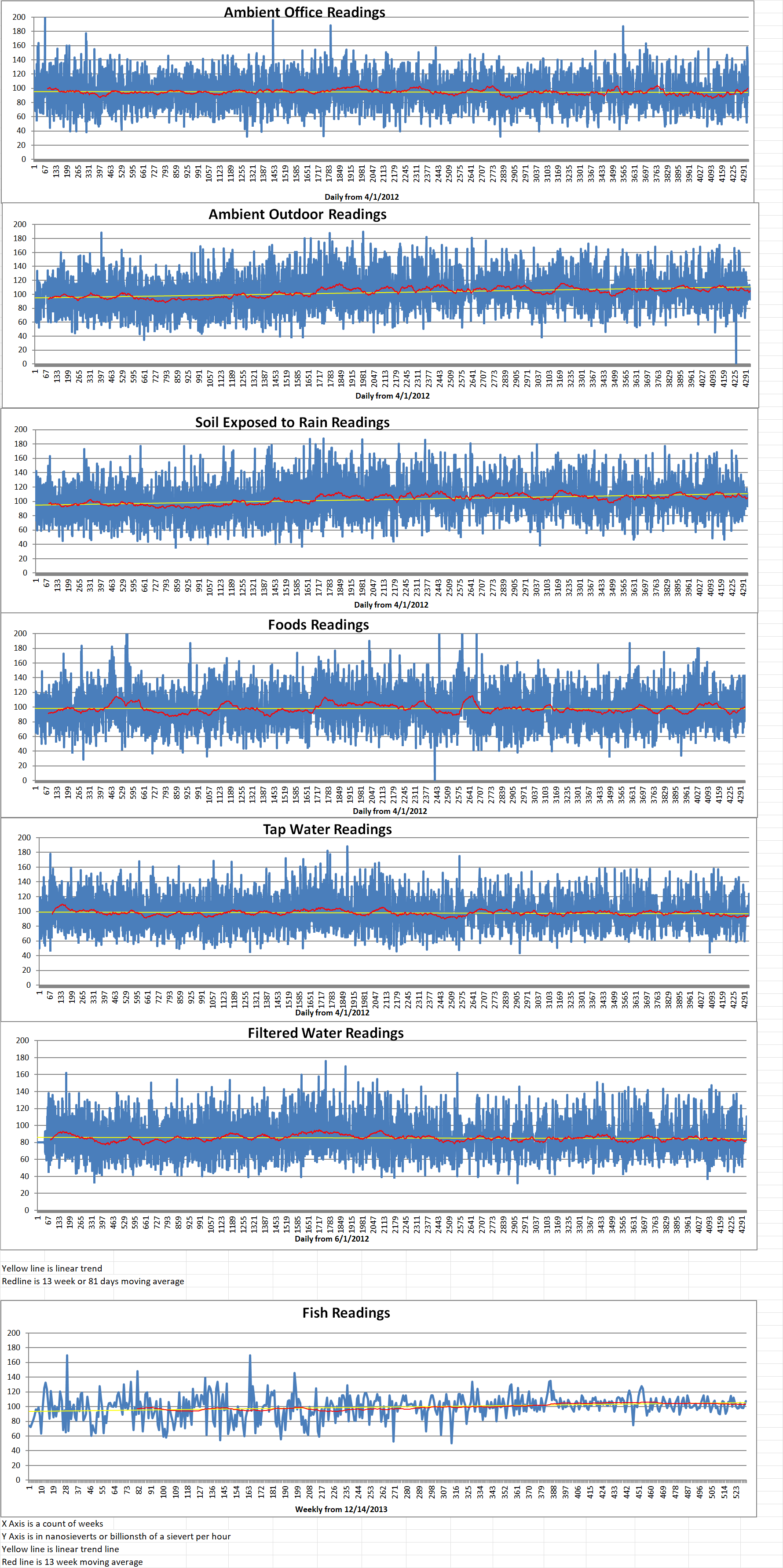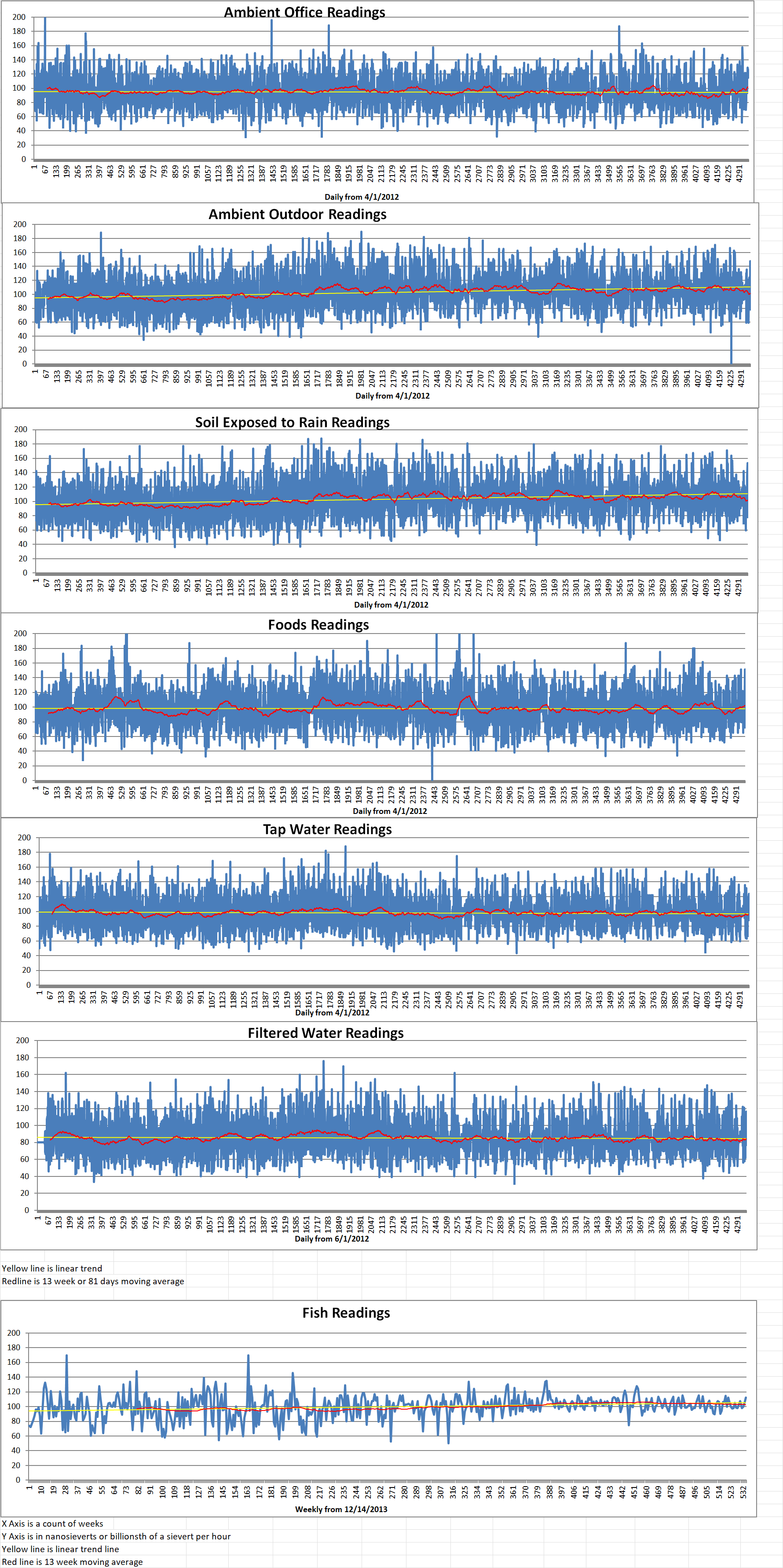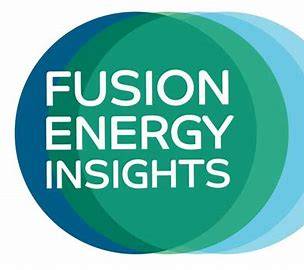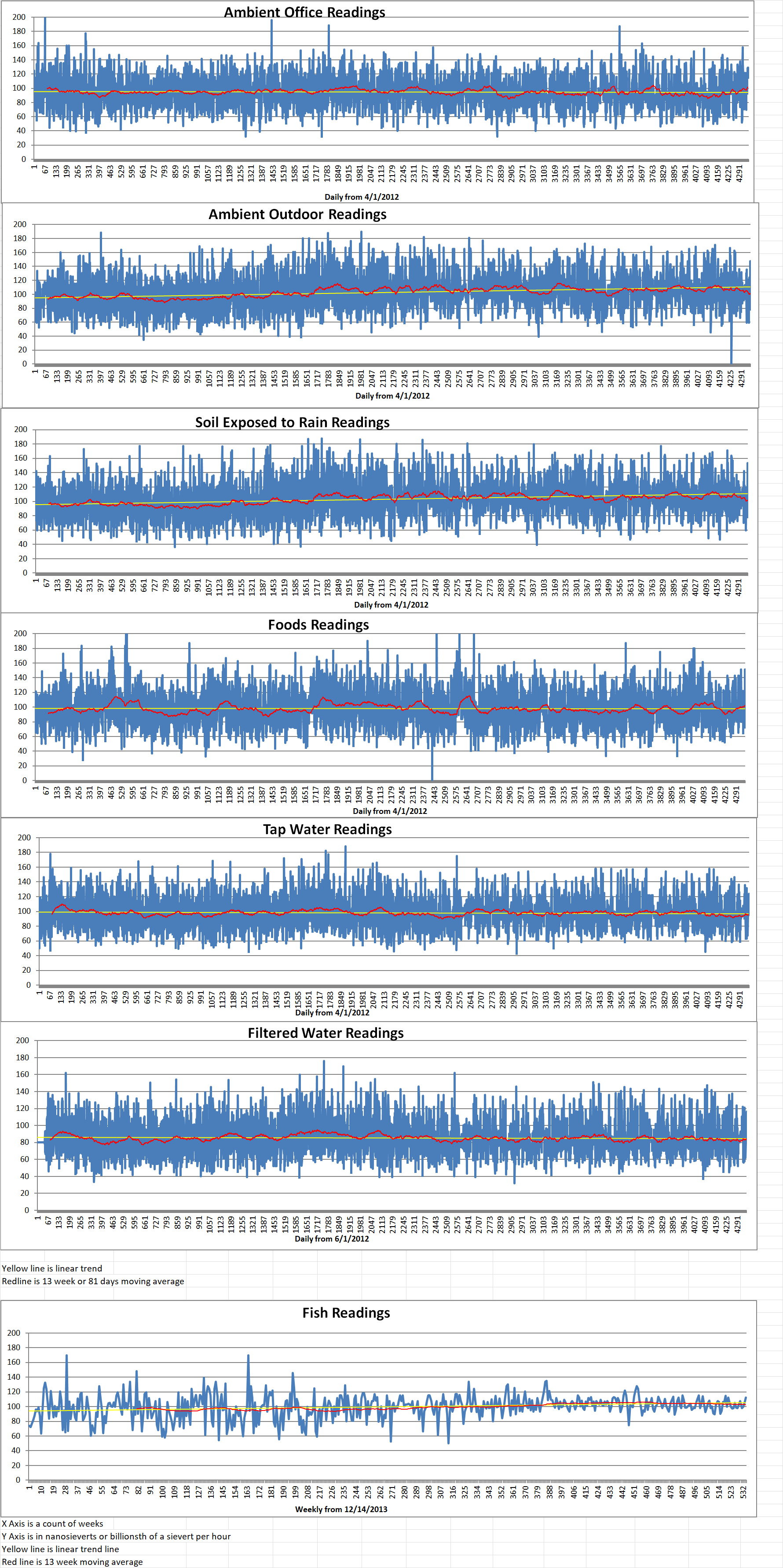Part 2 of 2 Parts (Please read Part 1 first)
Dozens of SMR designs have been proposed. For this study, Krall analyzed the nuclear waste streams generated by three types of SMRs being developed by Toshiba, NuScale, and Terrestrial Energy. Each company chose a different design. Results from these case studies were corroborated by theoretical calculations and a broader design survey. This three-pronged approach allowed the authors to draw powerful conclusions.
Rodney Ewing is the Frank Stanton Professor in Nuclear Security at Stanford and co-director of Stanford University’s Center for International Security and Cooperation (CISAC). CISAC is part of the Freeman Spogli Institute for International Studies at Stanford. Ewing is also a professor in the Department of Geological Sciences in the Stanford School of Earth, Energy and Environmental Sciences and a co-author of the Stanford study. He said, “The analysis was difficult because none of these reactors are in operation yet. Also, the designs of some of the reactors are proprietary, adding additional hurdles to the research.”
Energy is produced in a nuclear reactor when a neutron splits a uranium atom in the reactor core. This generates additional neutrons that go on to split other uranium atoms, creating a chain reaction. However, some neutrons escape from the core which is called neutron leakage. The escaping neutrons strike surrounding structural materials, such as steel and concrete. These materials become radioactive when impacted by neutrons lost from the core.
The new study found that SMRs will experience more neutron leakage than conventional reactors because of their smaller size. This increased leakage has an impact on the amount and composition of their waste streams.
Ewing said, “The more neutrons that are leaked, the greater the amount of radioactivity created by the activation process of neutrons. We found that small modular reactors will generate at least nine times more neutron-activated steel than conventional power plants. These radioactive materials have to be carefully managed prior to disposal, which will be expensive.”
The Stanford study also found that the spent nuclear fuel from SMRs will be discharged in greater volumes per unit energy extracted. The SMR waste can be far more complex than the spent nuclear fuel discharged from existing power plants.
Allison Macfarlane is a professor and director of the School of Public Policy and Global Affairs at the University of British Columbia and a co-author of the study. She said, “Some small modular reactor designs call for chemically exotic fuels and coolants that can produce difficult-to-manage wastes for disposal. Those exotic fuels and coolants may require costly chemical treatment prior to disposal. The takeaway message for the nuclear industry and investors is that the back end of the fuel cycle may include hidden costs that must be addressed. It’s in the best interest of the reactor designer and the regulator to understand the waste implications of these reactors.”
The Stanford study concludes that SMR designs are inferior to conventional nuclear power reactors with respect to radioactive waste generation, management requirements, and disposal options.
One major problem is long-term radiation from spent nuclear fuel. The research team estimated that after ten thousand years, the radiotoxicity of plutonium in spent nuclear fuels discharged from the three study modules would be at least fifty percent higher than the plutonium in conventional spent nuclear fuel per unit energy extracted. Because of this high level of radiotoxicity, geologic repositories for SMR wastes need to be carefully chosen through a thorough siting process, the authors said.
Ewing said, “We shouldn’t be the ones doing this kind of study. The vendors, those who are proposing and receiving federal support to develop advanced reactors, should be concerned about the waste and conducting research that can be reviewed in the open literature.”
Blog
-

Nuclear Reactors 1430- Standford University And The University Of British Columbia Collaborate On A Study Of Costs Of Small Modular Reactors – Part 2 of 2 Parts
-
Nuclear News Roundup Sept 27, 2024
New Missouri House committee will investigate impact of St. Louis nuclear waste missouriindependent.com
Kairos Power begins work on New Mexico salt production facility world-nuclear-news.org
Maritime uses of Naarea molten salt reactor to be evaluated world-nuclear-news.org
US Supreme Court to hear nuclear waste storage dispute legal.economictimes.indiatimes.com
-

Geiger Readings for Sept 27, 2024
Ambient office = 122 nanosieverts per hour
Ambient outside = 106 nanosieverts per hour
Soil exposed to rain water = 108 nanosieverts per hour
Garlic from Central Market = 87 nanosieverts per hour
Tap water = 102 nanosieverts per hour
Filter water = 89 nanosieverts per hour
-

Nuclear Reactors 1429 – Standford University And The University Of British Columbia Collaborate On A Study Of Costs Of Small Modular Reactors – Part 1 of 2 Parts
Part 1 of 2 Parts
Small modular reactors (SMR) have long been touted as the future of nuclear energy. However, they will actually generate more radioactive waste than conventional nuclear power plants. This was found during research at Stanford and the University of British Columbia.
Nuclear reactors generate electricity with limited greenhouse gas emissions. A nuclear power plant that generates one gigawatt of electricity also produces radioactive waste that must be isolated from the environment for hundreds of thousands of years. In addition, the cost of constructing a large nuclear power plant can be tens of billions of dollars.
To address these challenges, the nuclear industry is developing SMRs that generate less than three hundred megawatts of electric power. SMRs are about one tenth to one quarter the size of a traditional nuclear energy plant due to compact, simplified designs. They can be assembled in factories. Industry analysts say that these advanced modular designs will be cheaper and produce less radioactive waste than conventional large-scale reactors. However, a study published on May 31 of this year in Proceedings of the National Academy of Sciences has reached the opposite conclusion.Lindsay Krall is a scientist at the Swedish Nuclear Fuel and Waste Management Company and lead author of the study. She said, “Our results show that most small modular reactor designs will actually increase the volume of nuclear waste in need of management and disposal, by factors of 2 to 30 for the reactors in our case study. These findings stand in sharp contrast to the cost and waste reduction benefits that advocates have claimed for advanced nuclear technologies.”
About four hundred and forty commercial nuclear reactors currently operate globally. They provide approximately ten percent of the world’s electricity. In the U.S., ninety-three nuclear reactors generate about a fifth of the country’s electricity supply.
Unlike power plants that run on coal or natural gas, nuclear plants emit little carbon dioxide which is a major cause of global warming. Nuclear advocates say that as global demand for clean energy increases, more nuclear power will be needed to minimize the effects of climate change.
However, nuclear energy is not risk free. In the U.S., commercial nuclear power plants have produced more than eighty-eight metric tons of spent nuclear fuel, as well as substantial volumes of intermediate and low-level radioactive waste. The most highly radioactive waste is mainly spent fuel. It will have to be isolated in deep-mined geologic repositories for hundreds of thousands of years. Currently, the U.S. has no program to develop a geologic repository, after spending decades and billions of dollars on the Yucca Mountain site in Nevada. Spent nuclear fuel is currently stored in pools or in dry casks at reactor sites. It is accumulating at a rate of about 2,000 metric tons per year.
Some nuclear analysts claim that SMRs will significantly reduce the mass of spent nuclear fuel generated compared to much larger, conventional nuclear reactors. Other analysts say that conclusion is overly optimistic, including Krall and her colleagues.
Krall said, “Simple metrics, such as estimates of the mass of spent fuel, offer little insight into the resources that will be required to store, package, and dispose of the spent fuel and other radioactive. In fact, remarkably few studies have analyzed the management and disposal of nuclear waste streams from SMR.”
Please read Part 2 next -
Nuclear News Roundup Sep 26, 2024
Russia intercepts drone near Kursk, no damage to nuclear plant English.alarabiya.net
North Korea’s Kim threatens to destroy South Korea with nuclear strikes if provoked local10.com
Radioactive waste from Hanford Nuclear Site set to travel through Spokane krem.com
UT Enhancing Nuclear Education by Partnering with ORNL news.utk.edu
-

Geiger Readings for Sep 26, 2024
Ambient office = 115 nanosieverts per hour
Ambient outside = 99 nanosieverts per hour
Soil exposed to rain water = 96 nanosieverts per hour
English cucumber from Central Market = 97 nanosieverts per hour
Tap water = 113 nanosieverts per hour
Filter water = 100 nanosieverts per hour
-

Nuclear Fusion 82 – China May Soon Surpass The U.S. In Funding Fusion Research – Part 3 of 3 Parts
Part 3 of 3 Parts (Please read Parts 1 and 2 first)
In the early 1950s, the U.S. military tested a series of nuclear weapons in the Pacific Ocean that were “boosted” by gases that created a fusion reaction. This resulted in explosions that were seven hundred times more powerful than the Hiroshima blast.
Sustaining nuclear fusion for long periods is much more challenging than using it in nuclear weapons. While China races ahead with its tokamaks, the U.S. is finding an edge in other technology such as lasers.
In late 2022, scientists at the Lawrence Livermore National Laboratory in California shot nearly two hundred lasers at a cylinder holding a fuel capsule the size of a currant, in the world’s first successful experiment to generate a net gain of fusion energy. This indicates that more power came out of the process than was used to heat the capsule (though they didn’t count the energy needed to power the lasers).
There are additional ways to achieve nuclear fusion, and the U.S. is hedging its bets with research on a variety of technologies. It is definitely possible that this approach could pay off.
Melanie Windridge is a U.K.-based plasma physicist and CEO of Fusion Energy Insights, an industry monitoring organization. She said that “We don’t know exactly which is going to be the best concept, and it may not be one.” There may ultimately be several viable approaches for fusion power, she told an interviewer. “And then it will come down to costs and other factors in the longer term.”
Windridge said that the tokamak is the best-researched concept. “Over time, it’s had the most research put into it, so it’s the most advanced in terms of the physics. And a lot of the private companies are building on that.”
With all the money China is putting into research, the tokamak technology is rapidly evolving. China’s EAST tokamak in Hefei held plasma stable at seventy million degrees Celsius which is five times hotter than the core of the sun for more than seventeen minutes. This represents a world record and an objectively astonishing breakthrough.
Mikhail Maslov is with the U.K. Atomic Energy Authority. He described the Chinese breakthrough as an “important milestone,” adding that running long plasma pulses remains one of the biggest technical challenges to commercializing fusion energy.
While China’s government pours money into fusion, research in the U.S. has attracted far more private investment. Globally, the private sector has spent seven billion dollars on fusion in the last three to four years, eighty percent of which has been by U.S. companies, according to Allain.
Allain said that “In the U.S., what you have is that entrepreneurial spirit of being able to really think outside the box and innovate and really address some of these gaps, not just in science, but also in the technology.”
However, if the Chinese government continues to invest more than one billion a year, that could soon eclipse U.S. spending on fusion research, even in the private sector. And if those fusion investments pay off, colorful celebrations in Shanghai will not only be powered by fusion, but they will also cast China in a whole new light. -
Nuclear News Roundup Sep 25, 2024
Lukashenko tells IAEA’s Grossi Belarus does not want Chernobyl world-nuclear-news.org
US Exim Bank approves loan for Romanian SMR project world-nuclear-news.org
‘People will come back’: Kazakhstan debates nuclear future | National | wyomingnewsnow.tv wyomingnewshow.tv
Mississippi Senate Energy Committee Speaks with Lawmakers on New Nuclear Power Technology deltanews.com
-

Geiger Readings for Sep 25, 2024
Ambient office = 115 nanosieverts per hour
Ambient outside = 99 nanosieverts per hour
Soil exposed to rain water = 96 nanosieverts per hour
Corn from Central Market = 97 nanosieverts per hour
Tap water = 113 nanosieverts per hour
Filter water = 100 nanosieverts per hour
-

Nuclear Fusion 81 – China May Soon Surpass The U.S. In Funding Fusion Research – Part 2 of 3 Parts
Part 2 of 3 Parts (Please read Part 1 first)
Utilizing high temperature superconduction, the ES magnets are more powerful than the copper ones used in older tokamaks. According to MIT scientists researching the same technology, they permit smaller tokamaks that can generate as much fusion energy as larger ones, and they can better confine plasma.
The company is planning to build a second-generation tokamak to prove its methods are commercially viable by 2027. It expects a third-generation device that can feed power to the grid before 2035.
Andrew Holland is the CEO of the Washington, D.C.-based Fusion Industry Association. He said that in contrast, the tokamaks in the U.S. are aging. As a result, the U.S. researchers have to rely on allies’ machines in Japan, Europe and the UK to further its research.
Holland discussed a new five hundred and seventy million dollars fusion research park in eastern China under construction, called CRAFT, on track to be completed next year.
Holland continued, “We don’t have anything like that. The Princeton Plasma Physics Laboratory has been upgrading its tokamak for ten years now. The other operating tokamak in the U.S., the DIII-D, is a thirty-year-old machine. There are no modern fusion facilities at American national labs.”
There is a growing unease in the U.S. nuclear industry that China is beating America at its own game. Some of the next-generation tokamaks China has built, or plans to, are essentially “copies” of U.S. designs. They use components that resemble those made in the U.S.
Holland said that China’s state-funded BEST tokamak, which is expected to be completed in 2027, is a copy of one designed by Commonwealth Fusion Systems, a company in Massachusetts working with MIT. The two designs incorporate the same kind of advanced magnets ES is using. Another machine being built by a private Chinese company appears to be very similar to one designed by the U.S. company Helion. He added that there is “a long history” of China copying American tech.
Holland continued that “They’re fast followers and then take the lead by dominating the supply chain.” Using solar panel technology as an example he added that “We’re aware of this and want to make sure that’s not the way it goes forward.”
The China’s National Energy Administration was asked whether state-funded fusion research had copied or been inspired by U.S. designs. They have not replied to yet to the inquiry.
Nuclear fusion is a highly complex process that involves forcing together two nuclei that would normally repel each other. One way to do that is to increase temperatures in a tokamak to the tune of one hundred and fifty million degrees Celsius. That is ten times the temperature of the sun’s core. When they bind, the nuclei release a huge amount of energy as heat, which can then be used to turn steam turbines and generate power.
The U.S. has been a fusion leader for decades. It was the first nation to apply fusion energy in the real world — in a hydrogen bomb.
Please read Part 3 next
